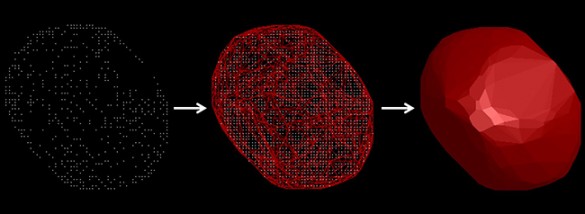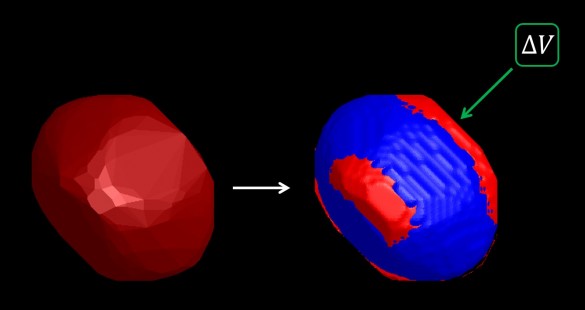Repeatedly throughout Earth’s history, giant pools of magma greater than 100 cubic miles in volume have formed a few miles below the surface.
They are the sources of super-eruptions – gigantic volcanic outbursts that throw 100 times more superheated gas, ash and rock into the atmosphere than run-of-the-mill eruptions, enough to blanket continents and plunge the globe into decades-long volcanic winters.

The most recent super-eruption took place about 27,000 years ago in New Zealand, well before humans kept records of volcanic eruptions and their aftermath. Geologists today are studying deposits from past super-eruptions to try and understand where and how rapidly these magma bodies develop and what causes them to eventually erupt. Despite considerable study, geologists are still debating how quickly these magma pools can be activated and erupted, with estimates ranging from millions to hundreds of years.
Now a team of geologists have developed a new “geospeedometer” that they argue can help resolve this controversy by providing direct measurements of how long the most explosive types of magma existed as melt-rich bodies of crystal-poor magma before they erupted. They have applied their new technique to two super-eruption sites and a pair of very large eruptions and found that it took them no more than 500 years to move from formation to eruption.
These results are described in the article “Melt inclusion shapes: Timekeepers of short-lived giant magma bodies” appearing in the November issue of the journal Geology.
“[lquote]Geologists have developed a number of different ‘timekeepers’ for volcanic deposits. The fact that these techniques measure different processes and have different resolutions, has contributed to this lack of consensus.[/lquote] Our new method indicates that the process can take place within historically relevant spans of time,” said Guilherme Gualda, associate professor of earth and environmental sciences at Vanderbilt University, who directed the project. The method was developed as part of the doctoral thesis of Ayla Pamukcu, who is now a post-doctoral researcher at Brown and Princeton Universities.
“The hot spot under Yellowstone National Park has produced several super-eruptions in the past. The measurements that have been made indicate that this magma body doesn’t currently have a high-enough percentage of melt to produce a super-eruption. But now we know that, when or if it does reach such a state, we will only have a few hundred years to prepare ourselves for the consequences,” Gualda said.
The researchers’ geospeedometer is based on millimeter-sized quartz crystals that grew within the magma bodies that produced these giant eruptions. Quartz crystals are typically found in magmas that have a high percentage of silica. This type of magma is very viscous and commonly produces extremely violent eruptions. Mount St. Helens was a recent example.

When the crystals form, they often capture small blobs of molten magma – known as blebs or melt inclusions. Blebs are initially round. While the crystal is floating in hot magma, diffusion causes them to gradually acquire the polygonal shape of the crystal void that they occupy. But this faceting process can be halted if eruption occurs before complete faceting is achieved.
Using advanced 3-D X-ray tomography, the researchers were able to measure the size and shape of the melt inclusions with exquisite precision. In cases where the inclusions had not become completely faceted, the researchers could determine how much time had elapsed since they were enclosed.

“Previous studies provided us with the data we needed to calculate the rate of the faceting process. We then used this rate, in combination with our shape measurements, to calculate how long the crystal existed in the magma before the eruption,” said Pamukcu.

In addition, the researchers compared the results obtained with faceting with results obtained using other techniques. Crystallization may cause variations in concentration of certain elements. In quartz, the element titanium can vary sharply between different zones or layers within the crystal. Over time, however, the process of diffusion gradually smooths out these variations. This process also stops at the eruption, so the shallower the slope of titanium concentrations across these boundaries today, the longer the crystal spent in magmatic conditions.
The physics of this process is also well known, so the researchers could use these measurements to provide an independent estimate of how long a crystal spent floating around in the melt. They found that the duration times they derived from the titanium diffusion measurements agreed closely with those produced by the faceting method.
They applied their geospeedometer to four large eruptions:
- Bishop Tuf in California that produced a super-eruption 760,000 years ago that blasted 240 cubic miles of dust, gas and rock into the atmosphere;
- Oruanui in the Taupo Volcanic Zone in New Zealand that produced a super-eruption 27,000 years ago that released 130 cubic miles of material;
- Ohakuri-Mamaku, a pair of high-volume eruptions that took place simultaneously in Taupo Volcanic Zone in New Zealand 240,000 years ago that together spewed out 60 cubic miles of material.
“Our current method will also work on smaller volcanic systems, as long as they erupt magmas that contain quartz crystals,” said Pamukcu. “We are also confident that we can adapt these techniques to work with other minerals, which will allow us to make similar timescale calculations for other types of magmas and volcanoes, like the low-silica basalts commonly erupted from Hawaiian volcanoes.”
Florence Bégue and Darren Gravley at the University of Canterbury in New Zealand were co-authors of the study.
The work was supported by Department of Energy—Geosciences grant DE-FG02-94ER14466 and National Science Foundation grants EAPSI-1209584, EAR-1321806, EAR-1151337 and EAR-0948528.